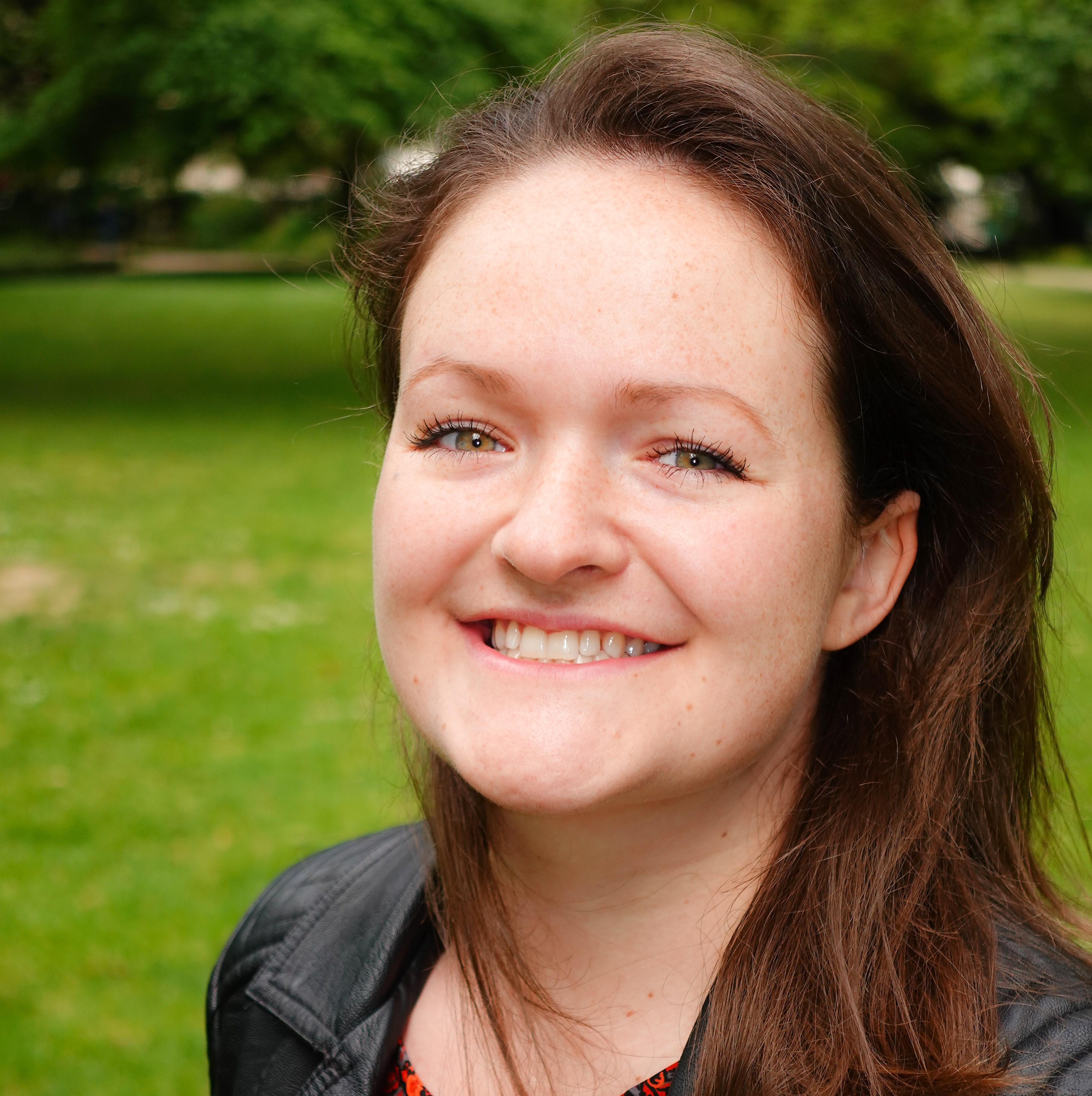With a shared goal of bolstering opportunities for young HD researchers and generous support from the Berman and Topper families, HDSA launched the Berman Topper HD Career Development Fellowship in 2016 to support future generations of passionate HD scientists and clinicians. In a recent interview, Lauren Byrne, PhD, a 2019 awardee of this prestigious fellowship, shared with us her journey into HD research and motivation for the depth of her involvement in the HD community.
Although a member of a Huntington’s Disease (HD) family from Northern Ireland, Lauren Byrne, PhD, didn’t discover her passion for Huntington’s research right away. Early interest in science led her to pursue an undergraduate degree in biology where she was introduced to Jeff Carroll, a gene positive HD researcher, and began to build her understanding of the global HD community. “At that stage, I knew I at least wanted to try to get involved in Huntington’s research, but I felt like I needed to know my genetic status to do that. If I was going to build a career in Huntington’s research I needed to know where I stood.”
Lauren was inspired by others in HD families who had embarked on careers in HD Research. After testing negative and diving deeper into the HD community, she discovered Sarah Tabrizi, an inspiring female leader and specialist in HD Research, Professor and Joint Head for the Department of Neurodegenerative Diseases at the University College London Institute of Neurology, and founder and director of the UCL Huntington’s Disease Centre. Upon entering into a master’s program at UCL in 2014, Lauren joined Tabrizi’s lab group where she discovered a passion for translational research—science that can be rapidly translated for clinical uses to directly benefit the HD community.
This has been a priority of Lauren’s research ever since, including the completion of her PhD under the guidance of Dr. Ed Wild in which she studied molecular indicators of Huntington’s Disease, biomarkers. “Biomarkers are anything we can measure from a person with Huntington’s Disease to tell us either the current state of their disease or whether a drug has had an impact on their disease progression—like a snapshot of their current health status.”
Dr. Byrne’s PhD research focused specifically on biofluid biomarkers, measurable in cerebrospinal fluids and blood samples, and mainly on Neurofilament Light protein (NfL). NfL, an important structural component of the brain’s signaling network, is the main byproduct of brain cell damage brought about by neurodegenerative disorders, including Huntington’s Disease.
“A single [NfL] measurement can give us insight into how someone’s brain health and clinical symptoms will change with the progression of the disease.” With the aim of developing high-sensitivity tools to track the progression of HD, NfL seems to be a strong biomarker for therapeutic research, and Dr. Byrne is already beginning to see that have an impact on trial design. “It’s amazing to feel like the work that I’ve done has contributed to therapeutic development in a real way…I love that translational aspect of research, and that’s where I want to take my career—to understand how we can go from developing the tools to measure a biofluid biomarker right to how we validate a biomarker in clinical data, and how that gets into clinical trial design and clinical monitoring.”
Dr. Byrne helped to determine that NfL protein can be detected in early stages of HD, even before onset of symptoms. In her current HDSA Berman-Topper research fellowship, she is building on those findings to characterize NfL protein across all gene carriers at different stages of life. Ideally, this will help other researchers assess the efficacy and optimal timing of clinical interventions in all patients, including premanifest gene carriers.
“Current trials and new drugs are tested in people with symptoms because we have clinical tools to measure those. But if we want to move into people that are not yet showing symptoms, we need tools to run those trials and make decisions of when is the best point to start treatment.” The possibility of treating Huntington’s Disease before onset of symptoms is a major goal for Dr. Byrne’s work. “If we do have disease-modifying therapy, the best time to treat will be long before symptoms start presenting so that hopefully we can prevent symptoms from ever occurring.”
With a strong personal connection to the HD Community, it’s no surprise that Dr. Byrne’s contributions extend beyond her expertise in the lab. “I can relate on the science side of things… but I also genuinely understand what it’s like to live with your loved ones having Huntington’s Disease.” This has led her to her current roles as a volunteer board member of the Huntington’s Disease Youth Organization (HDYO) and co-chair for the HDYO research committee. “It’s a good niche for me to keep building the evidence base of why it’s so important to support young people impacted by HD, because they’re the future and will be the target population for any new drugs down the line.”
Dr. Byrne has had the opportunity to keep building upon her doctoral studies with an HDSA grant generously supported by the Berman and Topper families. “Normally you have to apply to go somewhere else after your PhD, but I really don’t want to do other types of research! I’m very lucky to have found something that’s very important to patients, and [the Berman-Topper] fellowship has allowed me to continue riding that wave.” Additionally, collaboration with other Berman-Topper fellows has provided opportunities to build skills and knowledge as a researcher moving forward. “It feels like this fellowship has been a platform for me to grow, not just support for my research.”

 Dr. Lauren Byrne
Dr. Lauren Byrne 